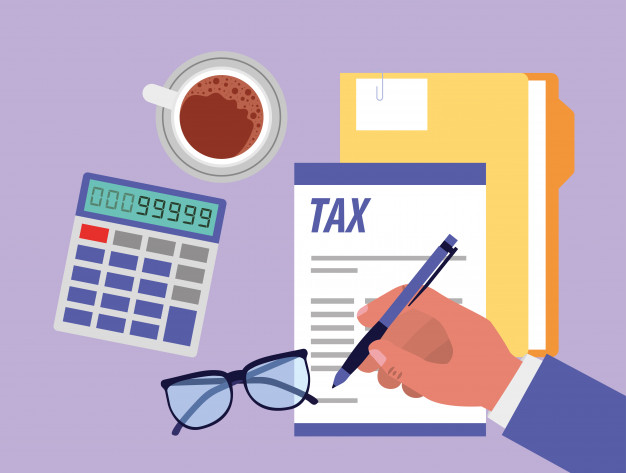Hyderabad: The Income Tax Department has opened the window for filing the new ITR-1 (e-form) for Financial Year 2019-2020 (Assessment Year 2020-2021) for taxpayers.
The form which is available on the Income Tax department official website will help taxpayers' in filing Income Tax Returns with ease for FY 2019-2020.
ITR-1 form is also known as SAHAJ form is for taxpayers with an income up to Rs.50 lakhs.
Let’s see who is eligible to file ITR- 1 and how to fill your return using this form.

This return form is for a resident individual whose total income for the Assessment Year 2019-20 includes:
- Income from Salary/Pension
- Individual should be a resident. NRIs cannot use ITR-1 to file their returns
- Total income of resident individual should not exceed Rs.50 lakhs
- Income from one house property (excluding cases where loss is brought forward from previous years)
- Income from other sources such as interest income (excluding winning from lottery and income from race horses)
- Agriculture income up to Rs 5,000 in a financial year
Who cannot use ITR 1 form?
- Total income exceeding Rs.50 lakhs
- Agriculture income exceeding Rs. 5,000
- If you have taxable capital gains
- If you have income from business or profession
- Having income from more than one house property
- Individuals who are either director in a company
- If you have had investments in unlisted equity shares at any time during the financial year
- Individual who is a resident and has assets (including financial interest in any entity) outside India or signing authority in any account located outside India
- If you are a resident not ordinarily resident (RNRO) and non-resident
- Having foreign assets or foreign income
- If you are assessable in respect of income of another person in respect of which tax is deducted in the hands of the other person
The major change taxpayer will notice in the new forms is that it allows you to claim the deductions for payment made toward tax-saving investments made between 1 April 2020 and 30 June 2020 under the Details of Investment (DI) schedule as the Finance Minister had allowed an extension in tax saving deadline for FY 2019-20, as a part of the COVID-19 relief.
Apart from this, here are the list of changes done in ITR-1 form:

- Under part A, ‘Pensioners’ checkbox has been introduced under the ‘Nature of the employment’ section
- Return filed under section has been segregated between normal filing and filed in response to notices
- Deduction under salary will be bifurcated into standard Deduction, entertainment allowance and professional tax
- The taxpayer will be required to provide income wise detailed information under the ‘Income from other sources’
- A separate column is introduced under ‘Income from other sources’ for deduction u/s 57 (iia)- in case of family pension income
- ‘Deemed to be let out property’ option now available under ‘Income from house property’
- Section 80TTB column has been included for senior citizens
New additional questions
This year ITR-1 form has three additional questions for taxpayers seeking details of deposit in current account, foreign travel spending and electricity bills. Below are the three new questions in ITR-1 form:
- Have you deposited an amount or aggregate of amounts exceeding Rs.1 Crore in one or more current account during the previous year? (Yes/No)
- Have you incurred expenditure of an amount or aggregate of amount exceeding Rs.2 lakhs for travel to a foreign country for yourself or for any other person? (Yes/No)
- Have you incurred expenditure of amount or aggregate of amount exceeding Rs.1 lakh on consumption of electricity during the previous year? (Yes/No)
How to file tax return using ITR-1 form?

A taxpayer can file ITR-1 in two different ways:
- By uploading an XML file that you can get download from the e-filling website. Fill the information, generate the XML file and finally upload the same on the Income Tax department’s e-filling website.
- Another way is by logging in to your account of e-filling website or register yourself first if you have yet not created account in departments e-filling website. Enter the information directly in the online form and submit it.
Note that the financial year has not been extended and has ended on 31 March 2020. It is only the deadline related to making tax-saving investments for FY 2019-20 that has been extended to 30 June 2020.
So if you have missed making some investment or payment under section 80C (LIC, PPF, NSC, etc), 80D (mediclaim), and 80G (donation) till March 31, you have time to do so till June 30 and still claim tax benefit for the last financial year.
Don’t miss the opportunity!
And, remember the last date to file the return is November 30.
(Written by Indu Choudhary. Author is a personal finance expert.)
Disclaimer: The above Article is based on the author's own research and ETV Bharat does not assume any responsibility or liability for the same.
If you have any queries related to your personal finances, we will get those answered from an expert. Reach out to us at businessdesk@etvbharat.com with complete details.



